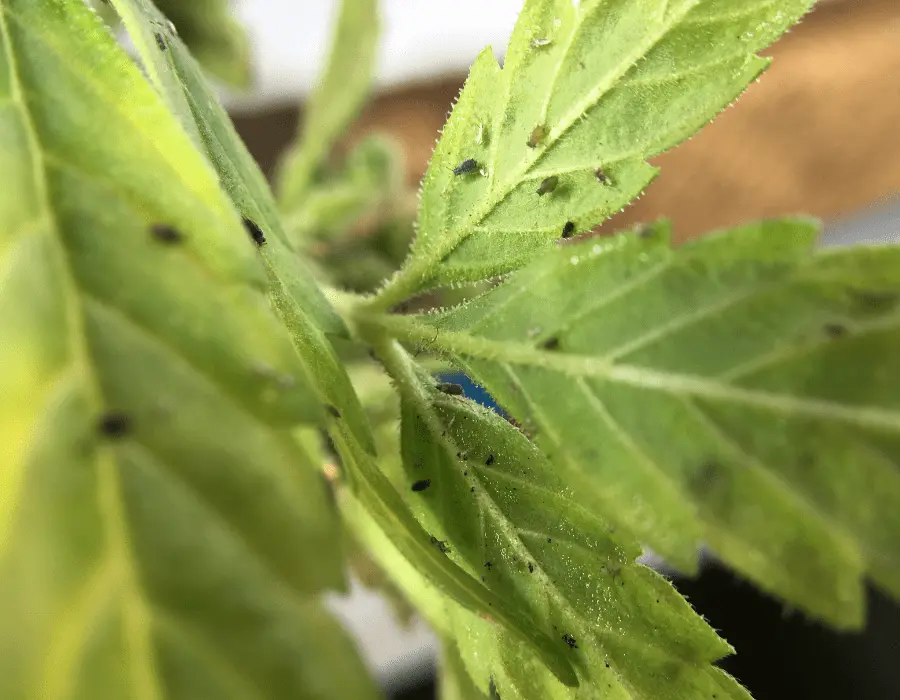Which is worse in a cannabis grow room, aphids or mites? Ask an experienced grower this question, and the reply will be they are all detrimental to marijuana plants. Whether the battle is with underground root aphid inhabitants or the microscopic russet mite populations, common cannabis pest infiltrations are extremely difficult to overcome.
Marijuana growers often turn to neem oil or chemical pesticides and insecticides to terminate the invasions. Many times though, resilient pest species build up resistances to these harsh inputs. Therefore, a continual rotation of different types of bug killers is necessary to slow the spread. As the pesky bugs learn to adapt to multiple inputs, it seems the more you spray, the faster they reproduce.
Outdoor organic cannabis growers have help from Mother Nature to thwart bad bug infiltrations on their plants. She sends in the good bugs to help eradicate the nuisance invasion in a thriving ecosystem. If you have ever noticed a large population of ladybugs in an outdoor garden, there is probably a substantial aphid assault playing out somewhere.
Indoor growers can utilize the same tactics by incorporating beneficial insects in cannabis grow rooms to combat destructive pests. Fighting bad bugs with good ones is a natural means of commanding pest invasions.
Pesticide Treatments VS Beneficial Insects
As long as folks have been growing marijuana, they have undoubtedly battled pest infestations. The common practice when eliminating nuisance fungus gnats or destructive spider mite outbreaks in the past has utilized commercial pest control products.
Heavy-hitting insecticides and fungicides are often used to rid the nuisance bugs. Unfortunately, many of the chemical compounds found in these powerful products are toxic when inhaled or ingested.
Another drawback to pesticide sprays is the insidious nature of bugs’ ability to adapt to their environment. When the same pesticide is applied repeatedly, pest populations soon become repellent to chemical compounds. A rotation of two or three different insecticidal products is required to combat the irrepressible pests from building resistance to the sprays.
Beneficial insects reduce many of the headaches incurred from frequent foliar spraying, not to mention cost savings on pesticide products, labour spent mixing the bug spray, and application processes. When introduced into cannabis grow environments, biological control agents eliminate these hefty expenditures.
Establish an IPM for Beneficial Insects in a Grow Room
At times, it seems no matter how strict marijuana growers are with cleanliness, sterilization, and isolation in a grow room, crafty pests often just appear. Incorporating beneficial insects into integrated pest management (IPM) programs before an outbreak occurs reduces the chance for unwanted predators to multiply.
While it is impossible to determine what type of pest may infiltrate an indoor grow set-up, introducing various good bugs early in cannabis plant growth reduces the survival rate of a renegade pest species. Afterwards, similar to an IPM using pesticide spray timetables, establishing schedules for the release of biological control agents ensures the populations stay active.
